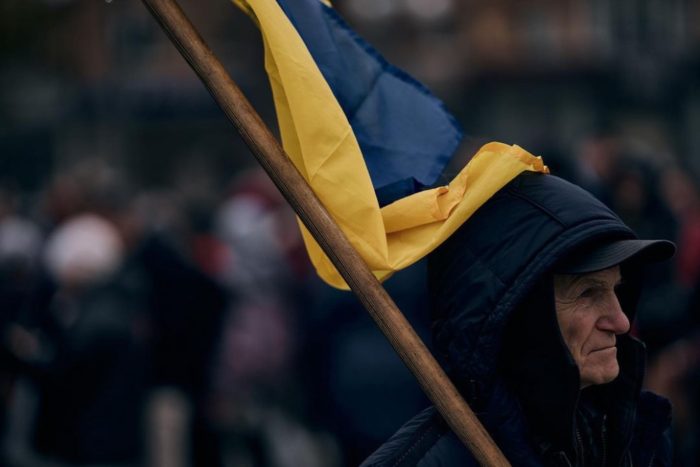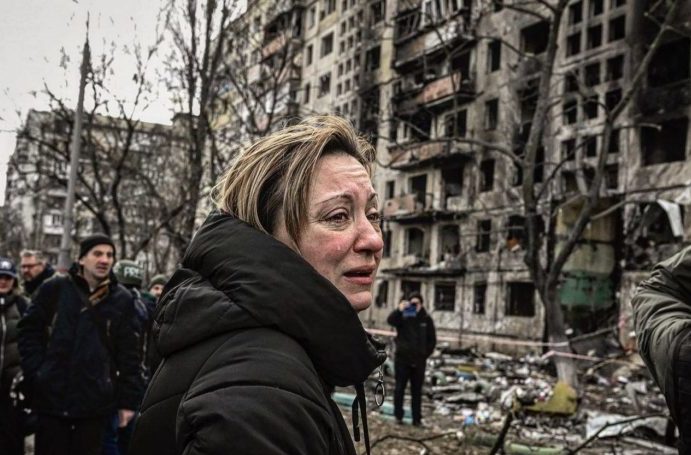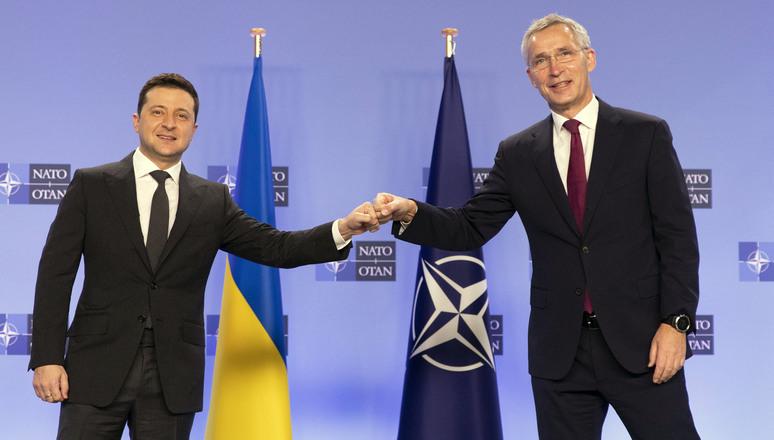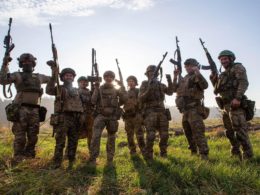Operation Desert Storm was the first major foreign crisis for the United States after the end of the Cold War.
When the US deployed in 1991, it deployed an overwhelming force to ensure victory at minimum costs against what was considered the fourth-largest army in the world at that time, consisting of 955,000 standing soldiers and 650,000 paramilitary forces. It was assumed that the Iraqi Army could field 4,500 tanks, 484 combat aircraft, and 232 combat helicopters.
Half a million US troops deployed to Saudi Arabia as part of Operation Desert Shield to deter Iraq from attacking the country. On Jan. 17, 1991, Operation Desert Shield became Operation Desert Storm after diplomacy failed.
It became the largest air campaign since the conflict in Southeast Asia. The US and 40 allied nations, including several Arab nations, flew more than 18,000 air deployment missions, more than 116,000 combat air sorties, and dropped 88,500 tons of bombs.
To ensure victory, the US deployed all armed services, ensuring superiority through combined arms. This included the US Army, Marine Corps, Air Force, and Navy, supported by coalition forces.
On the eve of Operation Desert Storm, the Coalition of the Gulf War had a staggering 2,430 fixed-wing aircraft in the theatre of operations. Almost 75% of these were American. When the ground assault began on 24 February 1991, the number had increased to over 2,780. After an air campaign of six weeks, the ground campaign lasted only 100 hours before Kuwait was liberated.
The US VII Corps was the primary – but not the only – combat formation of the coalition forces, it alone consisting of 1,487 tanks, 1,384 infantry fighting vehicles, 568 artillery pieces, 132 MLRS, 8 missile launchers, and 242 attack helicopters. In total, some 1,900 M1A1 Abrams and 460 attack helicopters were dispatched against the Iraqis in Desert Storm.
What is the relevance of Russia’s war against Ukraine?
Firstly – and by no means diminishing the strategic importance of Operation Desert Storm – the Russian invasion of Ukraine is threatening the security, stability, and prosperity of all NATO members. That’s not only due to the warfighting itself, but also the global repercussions of the war. What I have called the “tsunami of ripple effects” from the war includes increased costs of living, food and energy insecurity, increased famine, recession, and more. This raises the likelihood of social unrest, increased extremism, riots, and the fall of governments.
As strenuously stressed, the Russian attempt to defeat Ukraine is only one objective in its broader confrontation with the US, NATO, and the EU. According to the previous NATO strategic concept, the threat to its member states should have prompted the Alliance into action. It did not.
Secondly, the US and the coalition forces deployed to defeat the Iraqi forces. The end state and military objectives were defined. Their intent comes clearly across when assessing the numbers and the overwhelming force deployed.
Thousands of infantry fighting vehicles to fight Iraqi forces, compared to a limited number of French AMX-10s, 40 German Marders, and 50 US M2 Bradley Fighting Vehicles to help Ukraine fight Russia.
2,780 fixed-wing aircraft, 1,900 M1A1 Abrams, and 460 attack helicopters to help defeat the fourth-largest army in the world, but – so far – none to help Ukraine defeat the second-largest army in the world despite it defending the security of Europe.
The first effort clearly intended to defeat the aggressor, while the intention of the second is hard to define.
Both the Baltic states, Poland, and most of the countries that joined NATO after the end of the Cold War are supporting the Ukrainian war effort because the Ukrainian frontline is seen as their frontline. There is a war in Europe and the Eastern European countries see themselves as the next targets in what is a confrontation between Russia and the West. That’s why their aid in the share of their GDP is much larger than the US.
Increasingly more voices are being raised, saying what I have stressed since 2018. The consequences of a Russian victory in Ukraine are unacceptable to Europe.
Additionally, a growing realization that the war isn’t necessarily concluded on the battlefield is dawning on the West. Despite its many defeats on the battlefield, Russia still believes in victory. Nine years of war have played havoc on the Ukrainian economy and made the country dependent upon international financial support to survive.
Its GDP has fallen by 30% last year alone. Millions of its workforce have fled. Its industry and critical infrastructure are being destroyed. A great part of its agricultural areas is either occupied or mined. Rebuilding the country is assessed to be a staggering 750 billion dollars. Ukraine has lost control over its maritime exclusive economic zones and is exposed to a maritime blockade. Its export has fallen by 30%. The war itself has a huge impact on international investors’ motivation to invest in the country. Its financial ratings are suffering.
The expenses on national security and defense make up about 50% of the entire state budget expenses.
That does not mean that the situation on the battlefield has no impact on the overall outcome of the war. On the contrary, the situation in the military and non-military spheres are very much interlinked.
Russia has been waging a hybrid war – the parallel and synchronized use of both military and non-military means to undermine nations from within – for more than nine years. That did not change on 24 February.
It’s the same aggressor, with the same strategic aim and objectives, using the same tools as it has used for nearly nine years. Only the balance between the military and non-military means being employed has shifted.
If Russia can uphold the status quo – controlling parts of Luhansk, Donetsk, Zaporizhzhia, and Kherson, as well as all of Crimea and the Ukrainian maritime exclusive economic zones – Ukraine will collapse the moment western financial aid dwindles and stops. From experience, Russia knows that Western support is time limited.
That’s why the headline of Condoleezza Rice and Robert M. Gates Op-ed “Time is not on Ukraine’s side” is very astute.
“Both of us have dealt with Putin on a number of occasions, and we are convinced he believes time is on his side: that he can wear down the Ukrainians and that US and European unity and support for Ukraine will eventually erode and fracture. To be sure, the Russian economy and people will suffer as the war continues, but Russians have endured far worse.”
Stressing the need to act both quicker and more resolutely, they refer to what I have consistently called the “tsunami of ripple effects.” When arguing why the US and Europe have no choice but to increase their aid, Rice and Gates highlight that both our common security, stability, and prosperity are directly linked to the war.
They are in essence echoing the words of Michael Clarke, a professor of defense studies at Kings College London:
“Kyiv still has some way to go before it has enough equipment and troops to conduct the sort of offensive that will throw Russian forces out of most, or all, its territory. It needs a lot more of what it already has – and then more overtly offensive weapon systems, including heavier armored forces, more attack aircraft, and more drones and missiles.”
The Former US secretary of state and secretary of defense frames the same key message in a strategic context:
“Absent another major Ukrainian breakthrough and success against Russian forces, Western pressures on Ukraine to negotiate a cease-fire will grow as months of military stalemate pass. Under current circumstances, any negotiated cease-fire would leave Russian forces in a strong position to resume their invasion whenever they are ready. That is unacceptable.
The only way to avoid such a scenario is for the United States and its allies to urgently provide Ukraine with a dramatic increase in military supplies and capability — sufficient to deter a renewed Russian offensive and to enable Ukraine to push back Russian forces in the east and south.”
That is basically what I argued in my Op-ed in September (“Why an intervention in Ukraine is in NATO’s interest”). While none of them argues in favor of military intervention, their rationale for increased, more comprehensive, and faster defense support follows the same line of arguments.
Military intervention in Ukraine is in the national interests of all 30 NATO member states because:
- it is a question of integrity. It is about protecting international law and acting following the UN “Responsibility to Protect” doctrine. It is about defending our shared values and principles, and about denying countries the right to change borders by force. It’s about doing what’s right.
- Military intervention in Ukraine is in line with NATO’s strategic concepts from 2010. NATO cannot be seen to be deterred by Russia.
- A potential Russian victory would undermine European security and stability.
- The “tsunami of ripple effects” of the war increases the likelihood of social unrest, increased extremism, riots, and the fall of governments. The political landscape in the USA and Europe will – as in the 1930s – most likely be changed by political forces seeking to exploit the voters’ frustration.
- The West must respond to the hybrid war Russia is waging against Europe and the US. To continue to refer to the war as just a war between Russia and Ukraine undermines our own credibility. It is already a broader confrontation between Russia and NATO.
- The intervention is also inevitable as the West is running out of weapons it can supply Ukraine without extensive training.
When the three diplomats and experts argue for a fast and dramatic increase in military supplies and capabilities – the latter referring to “heavier armored forces, more attack aircraft and more drones and missiles” – their messaging must be seen in the context of past military endeavors.
In June, I concluded that Russia’s war with Ukraine affects billions. NATO could end it in a moment. The enormous difference between the US efforts in support of Kuwait and Saudi Arabia in 1991 and Ukraine during 2014-22 demonstrates, however, that the US and NATO have not yet defined the desired end state in Ukraine. This is highly likely because of the potential consequences of the fall of Russia.
The West wants to protect Ukraine but has shown that it does not want to fight for it. Additionally, it does not want a direct military confrontation with Russia.
The West does not want Ukraine to fall. Nor does it want Russia to fall. Russia, however, is slowly forcing the US, NATO, and the EU to pick one of the two. That’s a gamble Russia will lose as the realities are slowly dawning on the West.
There is only one acceptable off-ramp for Putin: a Ukrainian victory. As Politico wrote,
“Sending powerful armored vehicles such as the Bradley and Strykers could be a precursor to providing tanks. But Western nations remain stuck in much the same place they have been for months — debating who goes big first. There’s a strange back and forth with the Europeans where any time anyone asks, the Europeans they say, Well, you know, the US should go first. And the administration said, Well, we want the Europeans to go first or we want to do it together. And the Ukrainians are just saying, For the love of God, just give us the tanks.”
While Ukraine will be very much capable of operating ATACMS, Abrams, Leopards, F-16, and the multi-use Gray Eagle drone, none of these can be provided without time-consuming training.
If time is essential – and time is essential as Ukrainians are paying for our common security, stability, and prosperity with blood – military intervention is a part of the equation.
Related:
- Those attempting to save Putin’s face risk losing theirs
- Supplying off-ramps for Putin will destroy international law – Poland’s Ambassador to UN






